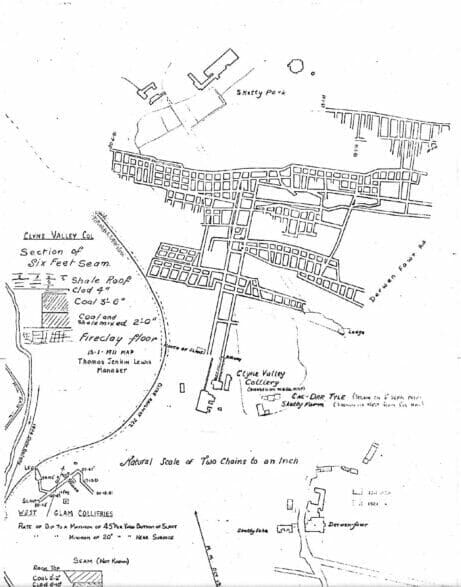Introduction
Clyne Valley Colliery was located behind Warwick Road, Derwen Fawr. The site of the surface buildings is now occupied by the waste recycling centre and its waste tips covered the area from the car park to the adventure playground. There are no visible remains. The colliery was served by a siding off the Clyne valley branch of the Mumbles Railway and slight traces of the first few yards can be seen in the area of disturbed ground beneath the footpath leading from the playground to the dark pool.
The Clyne Valley Colliery Company was formed in 1903 by John David Lodwig (1844-1915) to work coal under Sketty Park under a lease from the Morris estate. It was initially managed by the prominent local mining engineer, George E Gordon, but he was replaced within the first year. The first coal was struck in March 1903 and the Four Foot seam was reached on 12 November. By 1904 over 100 men were employed. The Five Foot vein was reached late in 1905 by which time nearly 200 men were employed. By 1906 the Three Foot, Yankee, Four Foot, Five Foot and Six Foot were all being worked with a corresponding increase in manpower. The average daily output was said to be 250 tons.
In 1906 the shipbuilding firm of Cammell, Laird & Co entered into negotiations with the Jersey estate for land near Port Tennant on which to build a steel plant and at the same time, they started to seek local sources of coal. They took a lease of coal under Fairwood common from the Duke of Beaufort in 1906 and the following December they bought Clyne Valley colliery for £32,000. At this stage, Clyne Valley was seen as no more than a starting point since the company envisaged developing an extensive new colliery under Fairwood common. They further expanded their property the following year by taking a sub-lease from Philip Richard of his neighbouring Commercial colliery.
Cammell Laird carried out a number of improvements of which one of the first was the installation of an electrical plant. New drifts were planned for the Four Foot seam with the intention of increasing output to 400 tons a day. However, in 1908 negotiations with the Jersey estate broke down and Cammell Laird abandoned their plans for a steelworks. They continued to operate Clyne Valley colliery but quickly abandoned Commercial in 1907 and apart from a trial slant at Dunvant (Wernfawr), nothing was done to open up the Fairwood lease.
In 1910 plans were announced for the addition of coke ovens, brickworks and a by-products plant but they do not seem to have materialised. By 1913 output was down to an average of 100 tons a day and in 1911 the Six Foot vein was abandoned. Complete closure followed in 1915.

